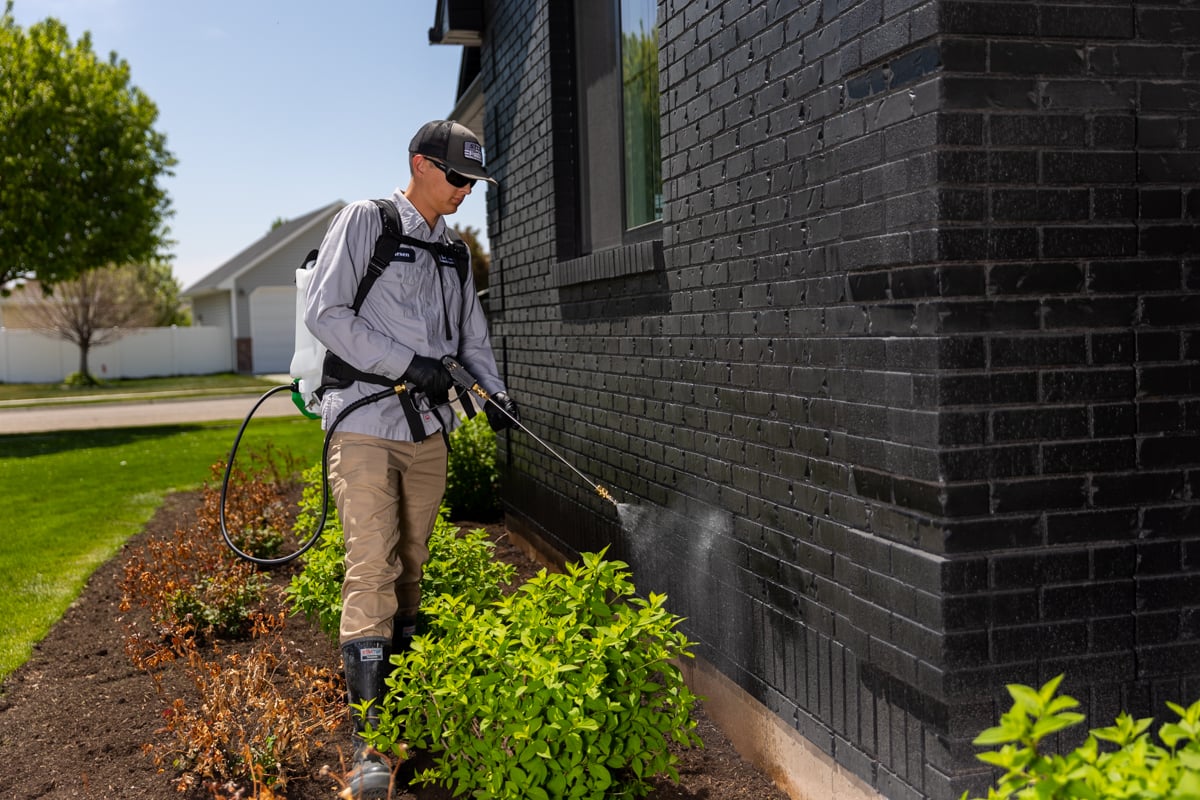Trusted A1 Exterminator Charlotte NC - Comprehensive Pest Solutions
Trusted A1 Exterminator Charlotte NC - Comprehensive Pest Solutions
Blog Article
Bed Bug Therapy Malfunction: Comparing Chemical Vs. Non-Chemical Solutions
In the world of parasite control, especially when handling the relentless problem of bed bugs, the selection in between chemical and non-chemical treatment solutions can be an essential one. Both strategies provide distinctive advantages and downsides, affecting variables such as efficiency, safety factors to consider, and total expense. By taking a look at the nuanced details of each approach, a clearer understanding of which path to seek in addressing a bed pest infestation can be acquired.
Effectiveness of Chemical Therapies
Chemical treatments for bed bug invasions have actually been widely acknowledged for their potent and fast efficiency in eliminating these insects. When considering the efficiency of chemical therapies, it is essential to comprehend that they can supply a fast and detailed remedy to a bed pest issue. Specialist pest control men usually count on insecticides to target bed pests at different stages of their life cycle, consisting of grownups, eggs, and fairies. These chemicals usually work by interrupting the bed insects' nerve system, bring about paralysis and ultimate fatality.
Moreover, chemical therapies have the benefit of supplying recurring results, indicating that they can proceed to get rid of bed bugs even after the initial application. This recurring action is particularly valuable in combating any possible re-infestations. In addition, the fast action of chemical therapies can bring alleviation to people dealing with severe bed insect invasions, enabling them to gain back control of their space rapidly.
Safety And Security Problems With Chemical Solutions
One critical facet that calls for careful consideration when using chemical services for bed bug treatment is making sure the safety and security of owners and the setting. Direct exposure to specific chemicals utilized in bed insect treatments can lead to breathing issues, skin irritability, or various other damaging reactions, specifically in people with pre-existing conditions or sensitivities.
Furthermore, the environmental influence of chemical options is one more significant factor to consider. Some chemicals made use of in bed insect treatments might be dangerous to valuable bugs, wildlife, and ecosystems if they seep right into the dirt or water systems. It is essential to make use of chemical treatments deliberately, following safety standards, and thinking about much less harmful options to mitigate these threats and guarantee the secure and efficient monitoring of bed pest invasions.
Benefits of Non-Chemical Methods
Thinking about the prospective safety and security worries and environmental effect associated with chemical services for bed pest therapy, exploring non-chemical techniques provides a promising option with several unique advantages. Non-chemical treatments are environmentally pleasant, as they do not add to air or water pollution, making them a sustainable choice for pest control.
Additionally, non-chemical remedies can be efficient in targeting bed pests, consisting of hard-to-reach areas where chemical therapies might not penetrate. Approaches such as warm treatment, vacuuming, steam cleansing, and bed mattress encasements give extensive obliteration without the use of dangerous chemicals. Moreover, non-chemical methods can be less disruptive, needing marginal prep work and permitting for quicker reentry into dealt with locations. In general, selecting non-chemical bed bug treatment methods not just prioritizes safety and environmental management yet also makes sure detailed and reliable bug control.
Limitations of Non-Chemical Treatments

Furthermore, non-chemical treatments often require multiple applications to achieve effective removal. This can be time-consuming and may not constantly ensure complete elimination of all bed bugs and their eggs, specifically in hidden or hard-to-reach areas.
Additionally, the success of non-chemical therapies heavily counts on correct application and thoroughness, which can be challenging for people without professional expertise. Insufficient application of non-chemical methods may cause incomplete obliteration, resulting in relentless infestations and the demand for additional therapies.
Therefore, while non-chemical treatments have their benefits, it is necessary to acknowledge these constraints and consider them when determining the most reliable approach for managing bed pest infestations.
Price Contrast: Chemical Vs. Non-Chemical Options
Given the restrictions linked with non-chemical therapies, a necessary aspect to assess in the context of bed pest management is the expense contrast in between chemical and non-chemical options. Chemical treatments normally entail the application of pesticides by experts, which can vary from $250 to $900 per area, relying on the severity of the infestation and the dimension of the location to be dealt with. In comparison, non-chemical therapies like heat treatment or heavy steam can be a lot more costly, with expenses varying from $1,000 to $6,000 for a whole home. While the first expense of chemical therapies might appear reduced, several therapies might be called for to fully eradicate the infestation, potentially enhancing the total price. On the various other hand, non-chemical choices may supply a much more green and lasting option, although they can be cost-prohibitive for some individuals. Ultimately, when thinking about the cost of bed pest treatment alternatives, it is necessary to consider the upfront costs versus the efficiency and lasting sustainability of the picked method.
Verdict

Taking into consideration the prospective safety problems and environmental effect connected with chemical solutions for bed pest treatment, discovering non-chemical strategies offers a promising option with numerous distinctive advantages.Given the constraints associated with non-chemical treatments, a necessary element to review in the context of bed pest monitoring is the expense comparison in between chemical and non-chemical choices. In contrast, non-chemical therapies like warm treatment or heavy steam can be much more expensive, with expenses ranging from $1,000 to $6,000 for an entire home. While the initial price of A1 exterminators charlotte nc chemical treatments may seem lower, numerous treatments may be required to completely eradicate the invasion, potentially increasing the overall expense.In conclusion, when comparing chemical and non-chemical bed insect therapy options, it is important to think about performance, safety, advantages, restrictions, and expense.
Report this page